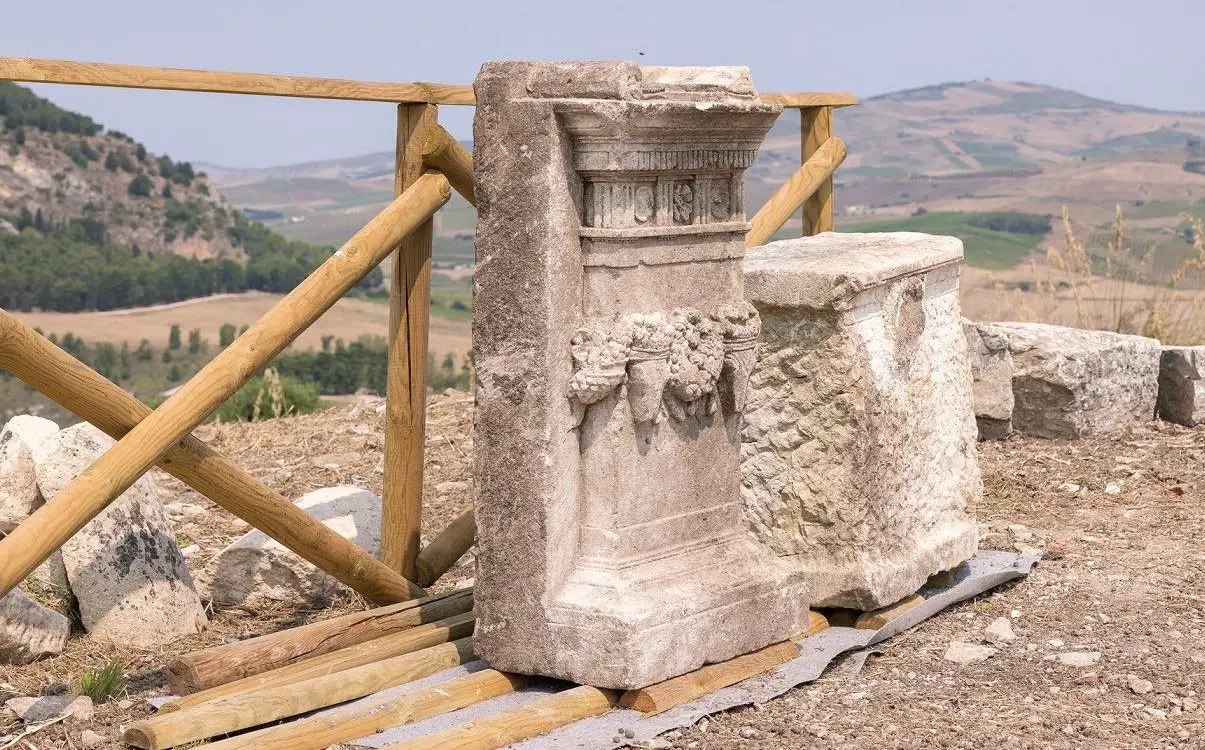According to an announcement by the Sicilian Region Institutional Portal, archaeologists excavating in ancient Segesta have discovered an altar from the Hellenistic period.
Segesta was one of the major cities of the Elymians, a people of Italic origin that shared the island of Sicily with the Phoenicians and Greek settlers. Although the origins of Segesta are obscured, the first recorded mention dates to around 580 BC which describes a conflict between Segesta and Selinus (modern Selinunte).
Culturally, Segesta exhibited Greek influences, and inscriptions on pottery show that the local dialect was written in the Greek alphabet. During the 5th century BC, the city was allied with Athens, and lured the Athenians to embark on the failed Sicilian Expedition during the Peloponnesian War between Athens on one side and Sparta, Syracuse and Corinth on the other.
The ruins of Segesta are located on the northwestern part of Sicily near the summit of Monte Bàrbaro, consisting of a Doric temple, an agora (central public space), an amphitheatre, and several remnants of the city walls.

Archaeologists excavating a building known as Casa del Navarca have uncovered two architectural elements made of stone, which upon closer examination have been identified as an altar from the Hellenistic period.
The altar would have been placed in a domestic dwelling for worship, with the first element featuring decorative moldings and small ovals reminiscent of necklace beads, a relief with baskets overflowing with flowers and fruits, and a carved slot for inserting a metal hook. The second element shows a chiseled surface on three sides which suggests that it was plastered, however, very little of the decorative features survive except for a molded cornice.
Francesco Paolo Scarpinato, the Regional Councillor for Cultural Heritage, said: “The excavations continue to bring to light ever-changing remains, which add new perspectives and interpretations to a site where multiple civilizations are stratified.”
Sicilian Region Institutional Portal
Header Image Credit : Sicilian Region Institutional Portal





